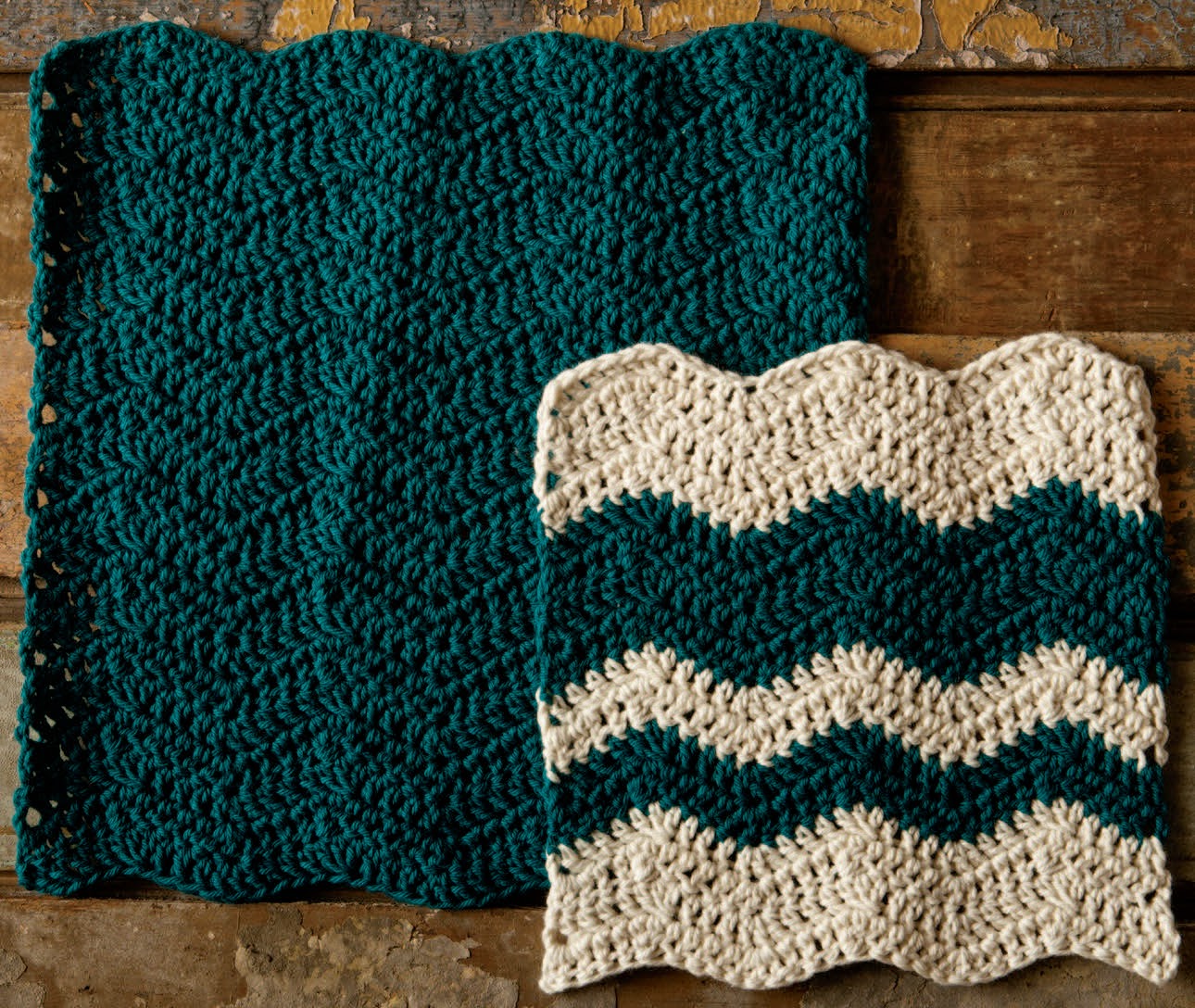Finished Measurements Approximately 10” Square
Needles US 5 (3.75mm) straight or circular needles, or size to obtain gauge
Notions Yarn Needle
Gauge 20 sts and 32 rows = 4” in St st
Notes: Arc en Ciel is a simple but cheery rainbow dishcloth with a variation on the Bargello stitch between each color and a garter stitch border. This happy dishcloth will make doing the dishes so much more fun. This pattern can also be made from just 2 or 3 colors to match your kitchen!
Directions
CO 51 stitches using C1
Rows 1-8: C1: Knit
Row 9 (RS): switch to color C2: Knit
Row 10 (WS): K5, P to last 5 sts, K5
Row 11: K
Row 12: K5, P to the last 5 sts, K5
Rows 13 -16: repeat rows 11 & 12
Row 17: (RS) switch to color C3: K5 *K1, slip next 3 sts purlwise with yarn in back; repeat from * across to 6 st before the end, K6
Row 18: (WS) K5, P1, *p1, slip next st with yarn in front, p2; repeat from * to 5 st from the end, K5
Rows 19-24: repeat rows 11 & 12
Row 25: switch to color C4: K5 *K1, slip next 3 sts purlwise with yarn in back; repeat from * across to 6 st before the end, K6
Row 26: K5, P1, *p1, slip next st with yarn in front, p2; repeat from * to 5 st from the end, K5
Row 27-32: repeat rows 11 & 12
Row 33: switch to color C5: K5 *K1, slip next 3 sts purlwise with yarn in back; repeat from * across to 6 st before the end, K6
Row 34: K5, P1, *p1, slip next st with yarn in front, p2; repeat from * to 5 st from the end, K5
Row 35-40: repeat rows 11 & 12
Row 41: switch to color C6: K5 *K1, slip next 3 sts purlwise with yarn in back; repeat from * across to 6 st before the end, K6
Row 42: K5, P1, *p1, slip next st with yarn in front, p2; repeat from * to 5 st from the end, K5
Row 43-48: repeat rows 11 & 12
Row 49: switch to color C7: K5 *K1, slip next 3 sts purlwise with yarn in back; repeat from * across to 6 st before the end, K6
Row 50: K5, P1, *p1, slip next st with yarn in front, p2; repeat from * to 5 st from the end, K5
Row 51-56: repeat rows 11 & 12
Row 57: switch to color C8: K5 *K1, slip next 3 sts purlwise with yarn in back; repeat from * across to 6 st before the end, K6
Row 58: K5, P1, *p1, slip next st with yarn in front, p2; repeat from * to 5 st from the end, K5
Rows 59-64: repeat rows 11 & 12
Row: 65: switch to color C9, knit all stitches
Row 66-72: knit all stitches BO all stitches
Finishing Weave in ends, block if desired.
The Original Pattern can be found at http://www.knitpicks.com/patterns/Arc_en_Ciel_Dishcloth__D55546220.html








